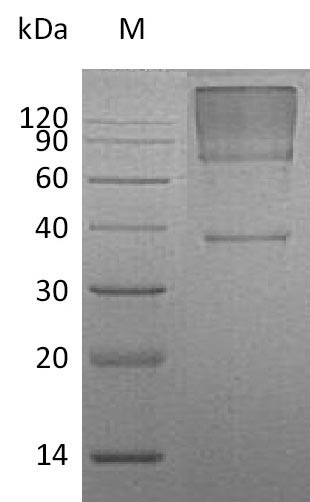Cookie-Einstellungen
Diese Website benutzt Cookies, die für den technischen Betrieb der Website erforderlich sind und stets gesetzt werden. Andere Cookies, die den Komfort bei Benutzung dieser Website erhöhen, der Direktwerbung dienen oder die Interaktion mit anderen Websites und sozialen Netzwerken vereinfachen sollen, werden nur mit Ihrer Zustimmung gesetzt.
Konfiguration
Technisch erforderlich
Diese Cookies sind für die Grundfunktionen des Shops notwendig.
"Alle Cookies ablehnen" Cookie
"Alle Cookies annehmen" Cookie
Ausgewählter Shop
CSRF-Token
Cookie-Einstellungen
FACT-Finder Tracking
Individuelle Preise
Kundenspezifisches Caching
Session
Währungswechsel
Komfortfunktionen
Diese Cookies werden genutzt um das Einkaufserlebnis noch ansprechender zu gestalten, beispielsweise für die Wiedererkennung des Besuchers.
Facebook-Seite in der rechten Blog - Sidebar anzeigen
Merkzettel
Statistik & Tracking
Endgeräteerkennung
Kauf- und Surfverhalten mit Google Tag Manager
Partnerprogramm

Bei Fragen nutzen Sie gerne unser Kontaktformular.
Bestellen Sie auch per E-Mail: info@biomol.com
Größere Menge gewünscht? Bulk-Anfrage
Bestellen Sie auch per E-Mail: info@biomol.com
Größere Menge gewünscht? Bulk-Anfrage
Organism: Homo sapiens (Human). Source: Mammalian cell. Expression Region: 25-559aa. Protein... mehr
Produktinformationen "Glypican-3 (GPC3), partial (Active), human, recombinant"
Organism: Homo sapiens (Human). Source: Mammalian cell. Expression Region: 25-559aa. Protein Length: Partial. Tag Info: C-terminal 6xHis-tagged. Target Protein Sequence: QPPPPPPDAT CHQVRSFFQR LQPGLKWVPE TPVPGSDLQV CLPKGPTCCS RKMEEKYQLT ARLNMEQLLQ SASMELKFLI IQNAAVFQEA FEIVVRHAKN YTNAMFKNNY PSLTPQAFEF VGEFFTDVSL YILGSDINVD DMVNELFDSL FPVIYTQLMN PGLPDSALDI NECLRGARRD LKVFGNFPKL IMTQVSKSLQ VTRIFLQALN LGIEVINTTD HLKFSKDCGR MLTRMWYCSY CQGLMMVKPC GGYCNVVMQG CMAGVVEIDK YWREYILSLE ELVNGMYRIY DMENVLLGLF STIHDSIQYV QKNAGKLTTT IGKLCAHSQQ RQYRSAYYPE DLFIDKKVLK VAHVEHEETL SSRRRELIQK LKSFISFYSA LPGYICSHSP VAENDTLCWN GQELVERYSQ KAARNGMKNQ FNLHELKMKG PEPVVSQIID KLKHINQLLR TMSMPKGRVL DKNLDEEGFE SGDCGDDEDE CIGGSGDGMI KVKNQLRFLA ELAYDLDVDD APGNSQQATP KDNEISTFHN LGNVH. Purity: Greater than 95% as determined by SDS-PAGE. Endotoxin: Less than 1.0 EU/µg as determined by LAL method. Biological Activity: Measured by its binding ability in a functional ELISA. Immobilized Human FGFb (146AA) at 2 µg/ml can bind Human GPC3 (C-6His), the EC50 of Human GPC3 (C-6His) is not higher than 50 ng/ml. Form: Lyophilized powder. Buffer: Lyophilized from a 0.2 µm filtered 1xPBS, pH 7.4. Reconstitution: We recommend that this vial be briefly centrifuged prior to opening to bring the contents to the bottom. Please reconstitute protein in deionized sterile water to a concentration of 0.1-1.0 mg/mL.We recommend to add 5-50% of glycerol (final concentration) and aliquot for long-term storage at -20 °C/-80 °C. Our default final concentration of glycerol is 50%. Customers could use it as reference. Storage: The shelf life is related to many factors, storage state, buffer ingredients, storage temperature and the stability of the protein itself. Generally, the shelf life of liquid form is 6 months at -20 °C/-80 °C. The shelf life of lyophilized form is 12 months at -20 °C/-80 °C. Notes: Repeated freezing and thawing is not recommended. Store working aliquots at 4 °C for up to one week. Relevance: Glypican-3/GPC3 is a member of the glypican family. It belongs to the glypican family and is highly expressed in lung, liver, and kidney. It is a heparan sulfate proteoglycan, which is overexpressed in various neoplasms such as hepatocellular carcinoma, malignant melanoma, and testicular yolk sac tumor, and plays an important role in cell growth and differentiation. GPC3 function is tissue dependent. In some tissues, GPC3 acts as a tumor suppressor gene, whereas in others, it acts as an oncofetal protein. GPC3 is a reliable marker for hepatocellular carcinoma. The sensitivity and specificity exceeds both alpha-fetoprotein and hepatocyte-paraffin1. GPC3 immunohistochemistry can aid in the differentiation of testicular germ cell tumors, being expressed in all yolk sac tumors but not in seminomas. GPC3 expression has also been identified in some squamous cell carcinomas of the lung and clear cell carcinomas of the ovary. Glypican-3 is currently regarded as a tumor marker and potential target for immunotherapy. Reference: n/a. Function: Cell surface proteoglycan that bears heparan sulfate. Inhibits the dipeptidyl peptidase activity of DPP4. May be involved in the suppression/modulation of growth in the predominantly mesodermal tissues and organs. May play a role in the modulation of IGF2 interactions with its receptor and thereby modulate its function. May regulate growth and tumor predisposition.
| Schlagworte: | OCI5, GPC3, Recombinant Human Glypican-3 (GPC3), partial (Active) |
| Hersteller: | Cusabio |
| Hersteller-Nr: | AP005371HU |
Eigenschaften
| Anwendung: | Active protein |
| Konjugat: | No |
| Wirt: | Mammalian cells |
| Spezies-Reaktivität: | human |
| MW: | 61.6 kD |
| Reinheit: | >95% (SDS-PAGE) |
| Format: | Lyophilized |
Datenbank Information
| KEGG ID : | K08109 | Passende Produkte |
| UniProt ID : | P51654 | Passende Produkte |
| Gene ID : | GeneID 2719 | Passende Produkte |
Handhabung & Sicherheit
| Lagerung: | -20°C |
| Versand: | +4°C (International: +4°C) |
Achtung
Nur für Forschungszwecke und Laboruntersuchungen: Nicht für die Anwendung im oder am Menschen!
Nur für Forschungszwecke und Laboruntersuchungen: Nicht für die Anwendung im oder am Menschen!
Hier kriegen Sie ein Zertifikat
Loggen Sie sich ein oder registrieren Sie sich, um Analysenzertifikate anzufordern.
Bewertungen lesen, schreiben und diskutieren... mehr
Kundenbewertungen für "Glypican-3 (GPC3), partial (Active), human, recombinant"
Bewertung schreiben
Loggen Sie sich ein oder registrieren Sie sich, um eine Produktbewertung abzugeben.
Zuletzt angesehen

